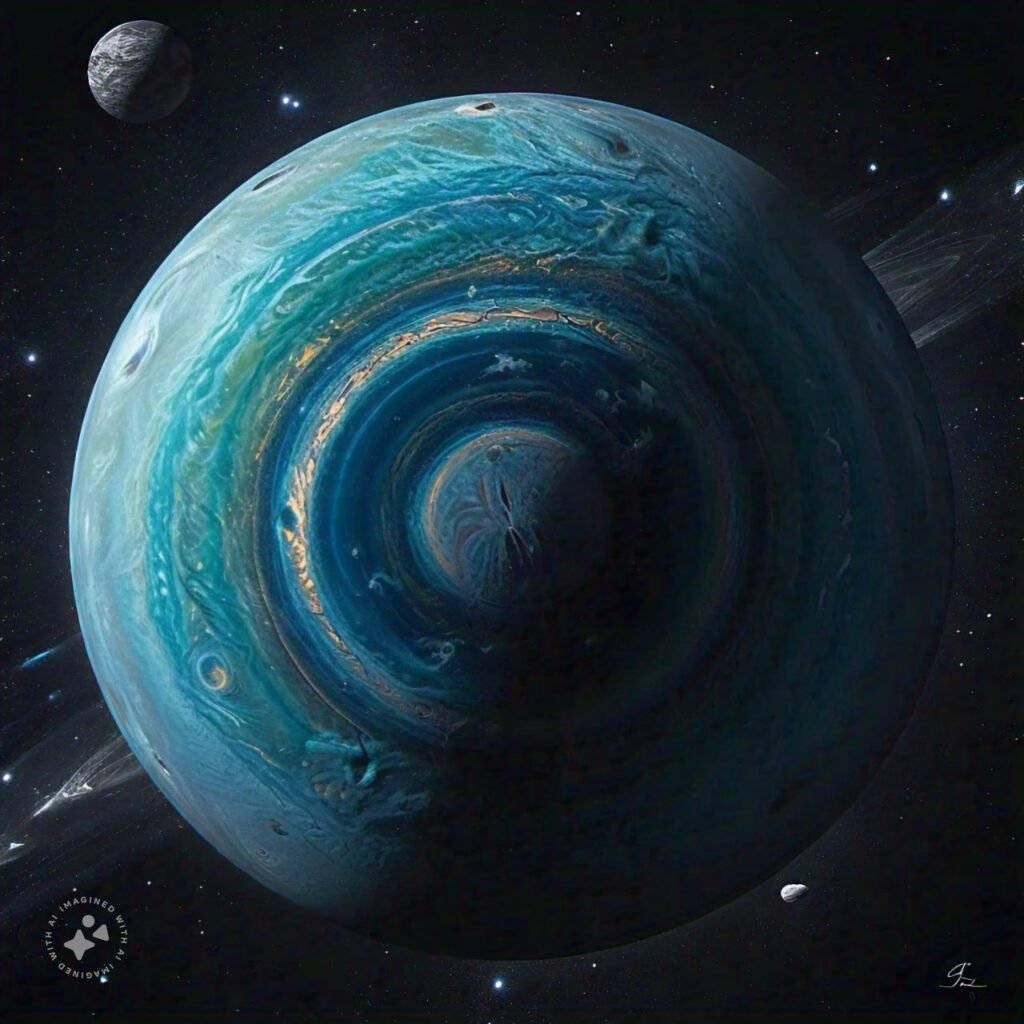
Uranus: The Ice Giant
Uranus is the seventh planet from the Sun, notable for its unique characteristics and often overlooked in favor of its more prominent neighbors, Saturn and Neptune. As one of the ice giants of our solar system, Uranus offers fascinating insights into planetary formation and atmospheric dynamics.
Discovery and Naming
Uranus was discovered by Sir William Herschel on March 13, 1781. It was the first planet found with a telescope, expanding our understanding of the solar system beyond the classical planets visible to the naked eye. Herschel initially thought he had discovered a comet or a star before its planetary nature was confirmed. Uranus was named after the ancient Greek deity of the sky, Ouranos, symbolizing the celestial nature of this distant planet.
Physical Characteristics
Uranus has a diameter of about 50,724 kilometers, making it the third-largest planet in terms of diameter but only the fourth-largest by mass. It has a volume that could contain 63 Earths, yet it has only 14.5 times the Earth’s mass, indicating a much lower density. This low density is a hallmark of the ice giants, primarily composed of hydrogen, helium, and various ices like water, ammonia, and methane.
Axial Tilt and Rotation
One of the most distinctive features of Uranus is its extreme axial tilt of about 98 degrees. This means that Uranus essentially rolls around the Sun on its side, with its poles experiencing long periods of sunlight and darkness during its 84-year orbit. This unique tilt results in extreme seasonal variations, unlike any other planet in the solar system.
Uranus rotates on its axis every 17 hours and 14 minutes. Its rotational axis is almost parallel to its orbital plane, which might be the result of a colossal impact with an Earth-sized object early in its history. This impact hypothesis is supported by the planet’s tilted magnetic field, which is also offset from its rotational axis by about 59 degrees.
Atmospheric Composition and Weather
The atmosphere of Uranus is primarily composed of hydrogen (82.5%) and helium (15.2%), with methane making up about 2.3%. Methane is responsible for the planet’s blue-green color, as it absorbs red light and reflects blue light.
Uranus’s atmosphere is divided into three layers: the troposphere, the stratosphere, and the thermosphere. The troposphere, where weather occurs, has a complex cloud structure with layers of water, ammonium hydrosulfide, and methane clouds. Uranus is known for its extremely cold temperatures, with the minimum atmospheric temperature dropping to around -224 degrees Celsius, making it the coldest planet in the solar system.
Despite its serene appearance, Uranus exhibits dynamic weather patterns. High-speed winds, reaching up to 900 kilometers per hour, sweep across the planet. Seasonal changes can lead to the formation of large, bright clouds and storms, although these are less frequent and less intense compared to those on Neptune.
Rings and Moons
Uranus has a faint ring system composed of dark, narrow rings that were discovered in 1977. There are 13 known rings, which are thought to be relatively young and likely formed from the remnants of a moon or other body that was shattered by a collision.
The planet also has 27 known moons, with names derived from characters in the works of William Shakespeare and Alexander Pope. The five major moons are Miranda, Ariel, Umbriel, Titania, and Oberon. Each of these moons presents a unique geological history, with features such as massive canyons, large craters, and varied surface compositions indicating past geologic activity.
Exploration and Observation
Uranus has only been visited once by a spacecraft, Voyager 2, which flew by in January 1986. Voyager 2 provided invaluable data on Uranus’s atmosphere, rings, and moons, but much remains unknown. Future missions to Uranus have been proposed, focusing on its intriguing magnetic field, atmospheric dynamics, and the potential for studying its moons in greater detail.
Scientific Significance
Studying Uranus provides critical insights into the nature of ice giants, a category of planets that appears common in other star systems. Understanding Uranus’s unique tilt, magnetic field, and atmospheric composition helps astronomers develop models of planetary formation and evolution. Additionally, the study of its moons and rings offers clues about the history and dynamics of the outer solar system.
In conclusion, Uranus stands as a fascinating and enigmatic world, with many mysteries yet to be unraveled. Its unique characteristics and extreme environment make it a compelling object of study for scientists seeking to understand the complexities of planetary science and the broader workings of our solar system.
